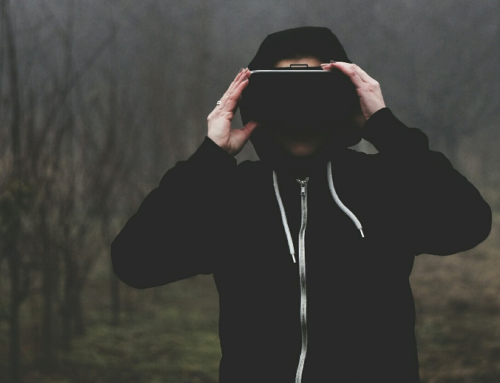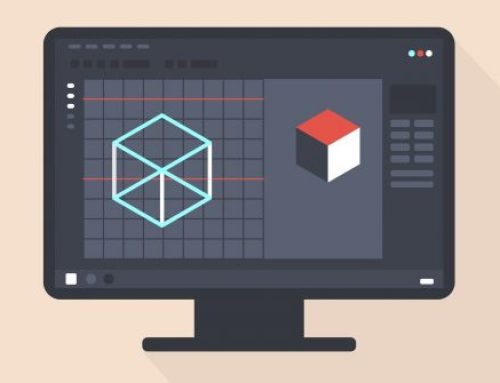Warum sich die Virtual Reality-Technologie noch nicht für den Privatkunden eignet.
Als HTC und Oculus ihre Virtual-Reality-(VR)-Headsets der ersten Generation im Frühjahr 2016 auf den Markt brachten, war es wie der Beginn einer Revolution. Diese Headsets waren immersiv und raffiniert, anders als alles, was das Publikum zuvor gesehen hatte, und ein eindeutiger Sprung nach vorne im Vergleich zu Katastrophen wie Nintendos Virtual Boy. Aber wenn man 3 Jahre vorspult, sind VR-Headsets immer noch nicht häufig in Wohnzimmern oder Schulen zu finden. Wenn Sie nicht einer der seltenen VR-Fans sind, haben Sie wahrscheinlich kein VR-Headset in Ihrem Haus.

Also, was zum Teufel ist passiert? Wurde VR vergessen und von technischen Neuheiten wie Curved Smart TVs oder Laserdics abgehängt? Nein, nicht ganz, aber die Anwendungsgebiete von VR haben sich verschoben – von den Häusern der frühen Anwender mit leistungsstarken Desktop-PCs zu den Forschungseinrichtungen und Trainingsstationen von großen Unternehmen. Sie haben nichts verpasst, die treibende Kraft für VR-Innovationen entwickelt sich stetig weiter.
Zahlreiche VR-Gesellschaften haben eigene Enterprise VR-Abteilungen geschaffen. HP hat eine, Varjo stellt den VR-1 ausschließlich für den Unternehmenssektor her. Erst vor wenigen Wochen kündigte HTC seine Abteilung Vive Enterprise Solutions an, die kommerzielle Anwendungen für VR-Hard- und Software unterstützt. Denken Sie auch an das tangential verwandte Microsoft HoloLens 2, das vorerst ein Gadget bleibt, das sich ausschließlich an Großunternehmen richtet (Leider beinhaltet dies auch militärische Anwendungen).
Für den Durchschnittsmenschen mag das enttäuschend klingen, aber in Wirklichkeit kommt es auf die Ökonomie an. VR ist teuer. Headsets wie das Vive Pro oder der Valve Index kosten zwischen 800 und 1.000 Euro, preiswertere Modelle wie das Oculus Quest hingegen kosten 400 Euro. Leider hat keine VR-Plattform im Gegensatz zu herkömmlichen Spielkonsolen genügend Inhalte, um die Entertainment-Bedürfnisse der Menschen vollständig zu erfüllen. Budgetbeschränkte Verbraucher könnten gezwungen sein, zwischen dem Kauf eines neuen Fernsehers, einer Konsole, eines PCs oder eines VR-Headsets zu wählen und in den meisten Fällen gewinnen traditionelle Alternativen. Darüber hinaus ist die Verwendung von VR anstrengender als das Fernsehen oder das Spielen von Spielen auf der Couch oder am Schreibtisch. Eine Stunde in VR entspricht nach der geistigen und körperlichen Anstrengung in etwa 3 bis 4 Stunden Nutzung traditioneller Alternativen wie TV oder Spielkonsole.
Machen Sie sich darüber Gedanken, ob sich diese Investition für Sie lohnt. Insgesamt 500 € oder 1.000 € ist eine Menge für eine normale Person, die Geld für Nischenelektronik ausgibt, aber für ein großes Unternehmen ist es eine große Veränderung. Zu den gleichen Kosten wie der Flug eines Ingenieurs zu einer Baustelle oder Produktionsstätte, könnte ein Unternehmen ein VR-Headset kaufen. Das heißt nicht, dass VR keine bedeutende Investition ist – die größten Kosten von VR sind die Wartung aller Supportsysteme, die benötigt werden, um die Technologie richtig zu nutzen. Aber es ist möglich zu sehen, wie sich die Zahlen summieren könnten.
VR kann auch ein nützliches Trainingsinstrument sein. Anstatt beispielsweise einer Person eine Präsentation über Sicherheitsrichtlinien und -vorschriften zu zeigen, können Sie jemanden in eine simulierte Umgebung bringen und ihn auf einen simulierten Notfall reagieren lassen. Wir haben dies auch erster Hand in einem Trainingstool erlebt, mit dem Bauarbeiter daran erinnert werden sollen, wie wichtig es ist, ihre Kabelbäume auf Beschädigungen zu überprüfen und sicherzustellen, dass ihre Rettungsleine immer richtig an einer nahegelegenen Struktur befestigt ist. Als der Boden auf einem klapprigen Gerüst herausfiel, fühlten wir, wie unsere Eingeweide an unsere Hälse ragten. Das ist eine viel lebensechtere Erfahrung, als es die Powerpoint-Folie je sein wird.
Die Erstellung von VR-Inhalten ist schwierig und nur wenige Menschen haben das Fachwissen oder die Tools, um ihre eigenen VR-Erfahrungen zu gestalten. Mit ihren hohen Budgets können Unternehmen ganze Teams einstellen, um maßgeschneiderte Software für ihre individuellen Bedürfnisse zu entwickeln. Zudem können Sie mit dieser Erfahrung leichter zu einem gemeinsamen Wissen beitragen, das für die Entwicklung zukünftiger Anwendungen genutzt wird.
Vor einigen Wochen hatten wir die Gelegenheit, mit Dan O`Brien, dem Leiter der Enterprise Solutions von HTC Vive, zu sprechen. Er sagte, dass sich das Unternehmen immer noch sehr stark auf die Entwicklung von VR-Produkten für Verbraucher wie den kommenden Vive Cosmos konzentriert. Aber viele VR-Innovationen kommen inzwischen von Anforderungen auf Unternehmensseite, die eine der treibenden Kräfte bei der Entwicklung des Vive Pro Eye war.
Darüber hinaus bemerkte O`Brien, dass sich die Art und Weise, wie Menschen erstmals mit VR interagieren, verändert. Früher konnte jemand VR durch etwas wie Google Cardboard, ein Samsung Gear VR oder selten, auf Drängen eines Freundes, der ein PC-basiertes VR-Headset besaß, erleben. Aber jetzt kommt es zu ersten Nutzungen von VR im Büro, wo VR einen hohen Nutzen verspricht.
Es macht für die meisten Unternehmen einfach keinen Sinn, VR-Inhalte zu entwickeln, die nur einen winzigen Kundenkreis ansprechen. Drei Jahre nach der Geburt der modernen VR, wenn man die Leute nach den besten Spielen fragt, bekommt man in der Regel zwei Antworten: Beat Saber oder Super Hot VR. Obwohl diese Titel sehr gelungen sind, hat sich immer noch bis heute keine VR-App nachhaltig einen Namen gemacht. VR wartet immer noch auf sein Super Mario Bros oder World of Warcraft – ein Spiel, die die Fähigkeiten der Plattform in ein unvergessliches Erlebnis verwandelt, das man sonst nirgendwo bekommt.
Trotz allem möchten wir nicht pessimistisch für die Zukunft der VR sein. Schauen Sie sich all die Fortschritte an, die wir im letzten Jahr gesehen haben wie z.B. die Einführung mehrerer eigenständiger VR-Headsets, verbessertes Inside-Out-Tracking, Eyetracking und jetzt die Hand- und Fingererkennung im Valve Index.
Die Auflösung von 2.160 x 2.160 (pro Auge) beim HP Reverb konnte sogar den „Screen Door Effekt“ beseitigen. Obwohl bei einem Headset mit einer Auflösung, die hoch ist, entstehen neue visuelle Artefakte, wie die Möglichkeit zu sehen, wo sich die vier Ecken eines Pixels schneiden, die als sehr schwache Punkte in der Optik des Headsets erscheinen. Aber dies ist nur ein Beispiel dafür, wie eine Lösung mehr Herausforderungen mit sich bringt.
Im Gegensatz zur Ökonomie tritt der Trickle-Down-Effekt in der Technik tatsächlich auf, und er funktioniert im VR-Bereich und nur weil Unternehmen nicht alle sechs Monate neue Headsets herausbringen, bedeutet das nicht, dass sich die Zeit der VR dem Ende neigt. Es wird nur etwas länger dauern, bis es Mainstream wird, als man zunächst dachte. Seien Sie geduldig, Ihre VR-Träume sind noch am Leben und gut.
Vielen Dank für Ihren Besuch.


